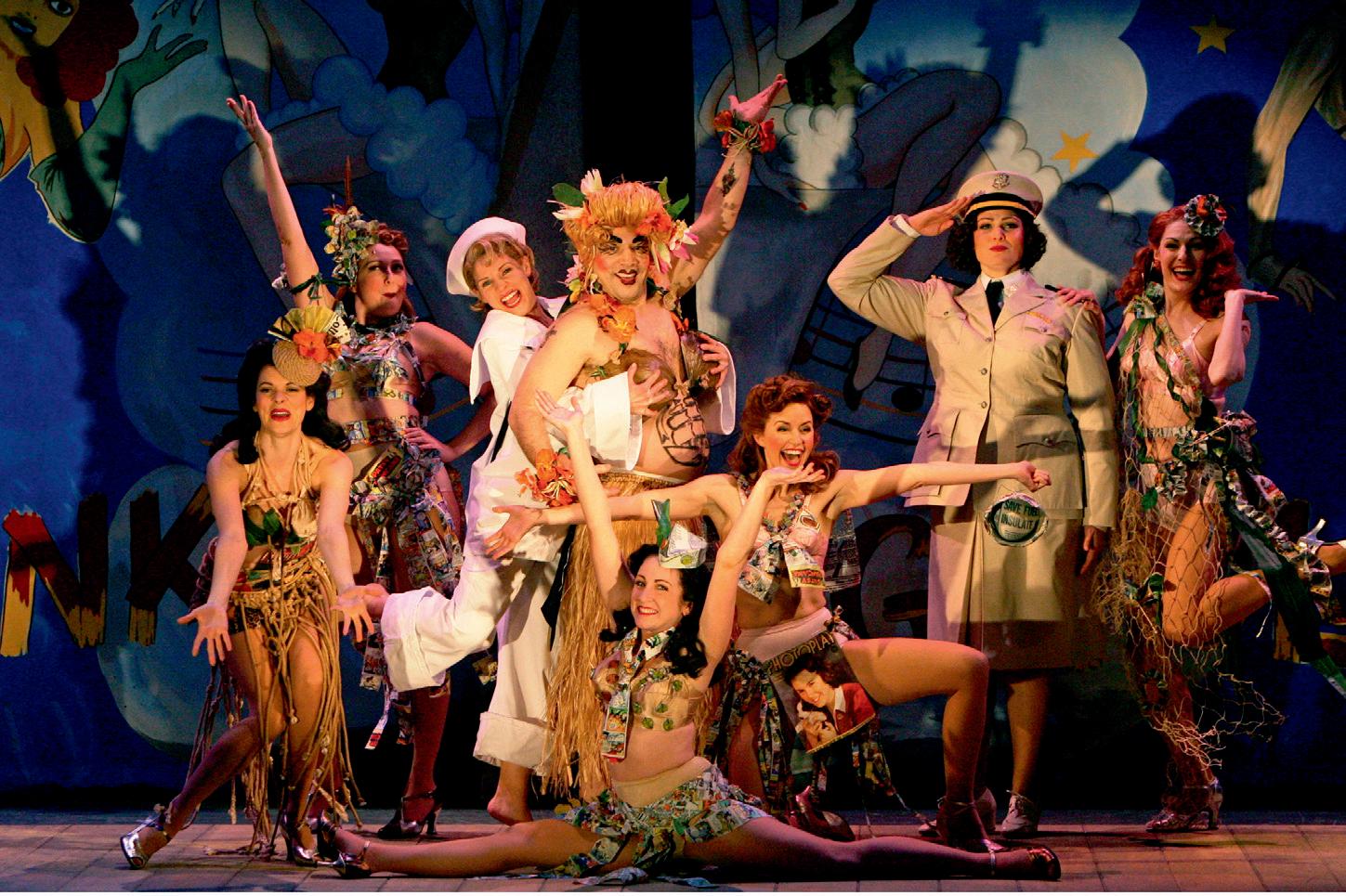
4 minute read
THE ART WON
TED CHAPIN
I REMEMBER THE PHONE CALL. We had done a concert of South Pacific at Carnegie Hall to which I invited several Broadway producers asking for the rights to present a revival. Some were concerned about the relevance of the piece, and whether a modern-day audience would feel the same emotions that made the show a post-war hit. Do we create a black-and-white documentary film over the Overture? One of the producers had a star in mind who could in no way capture the resonance of “Some Enchanted Evening.” I also invited André Bishop.
The next day André made a gracious call thanking me for his tickets. Almost casually, he mentioned that he had always been interested in the property.“Were you to grant me the rights,” he continued, “I would put the creative team behind The Light in the Piazza on it.”
That was a lightbulb moment. Piazza had been a triumph on many levels, providing director Bart Sher with his New York debut. The design team completely understood time and place. I was sold. I then had to convince my bosses, Rodgers and Hammerstein. I explained that Lincoln Center Theater would only guarantee a three-month run, so while it didn’t have the open-ended possibility of Broadway, they controlled the real estate and there was the possibility the production could be extended if business warranted. We knew a Lincoln Center Theater production would be good—they always are—so the choice was art versus commerce. Mary Rodgers and Alice Hammerstein, God love them, got it right away. The art won out. Sometimes commerce follows.
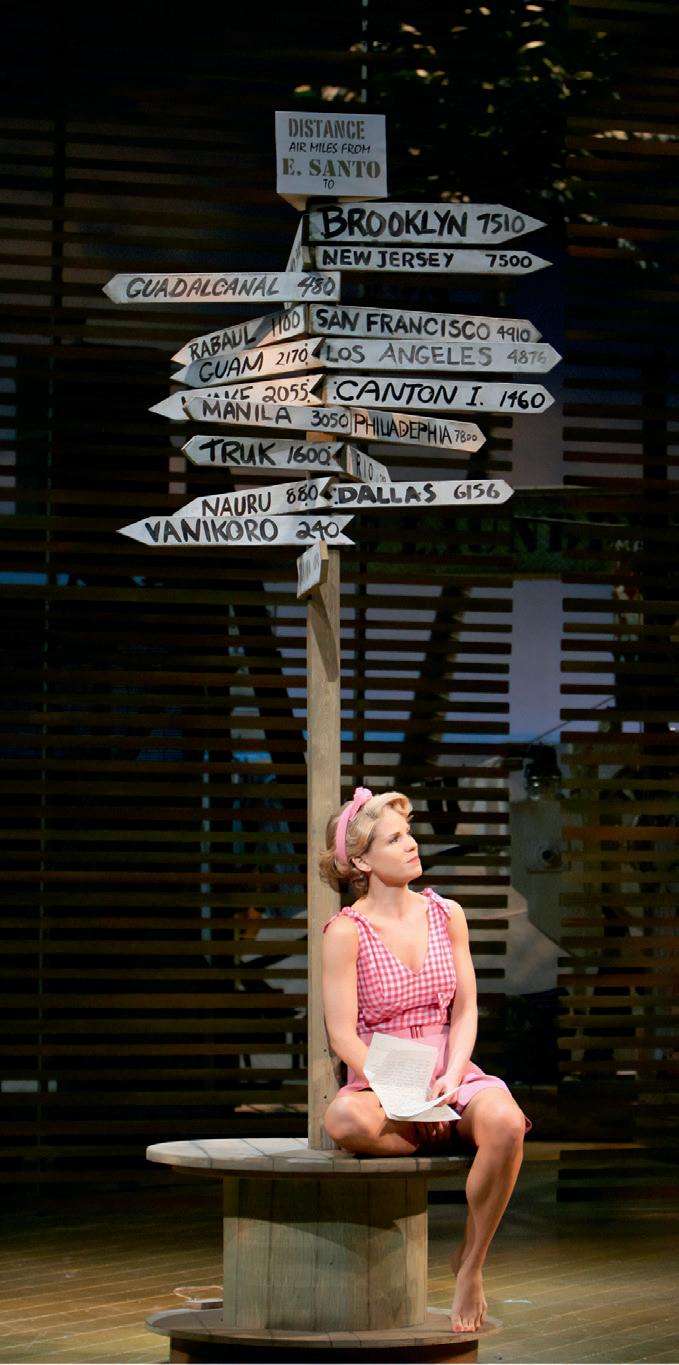
Thus began one of the most extraordinary and extraordinarily pleasant experiences of my years at Rodgers & Hammerstein. A few golden moments: in one of my touch base calls with André, he said they were working on a coup de théâtre. “What?” I asked. “I can’t say yet. We still have to figure out if we can make it happen.” I had seen an Australian production in which an airplane flew out over the audience. What more could there be? Of course, André was talking about the stage pulling back during the overture to expose the 28-person orchestra. They figured out how to do it. Not only was it a coup de théâtre, but it put the ‘music’ back in musical. Seeing those players and hearing the orchestrations created by the great Robert Russell Bennett in 1949 was as thrilling and theatrical a moment as I had ever witnessed.
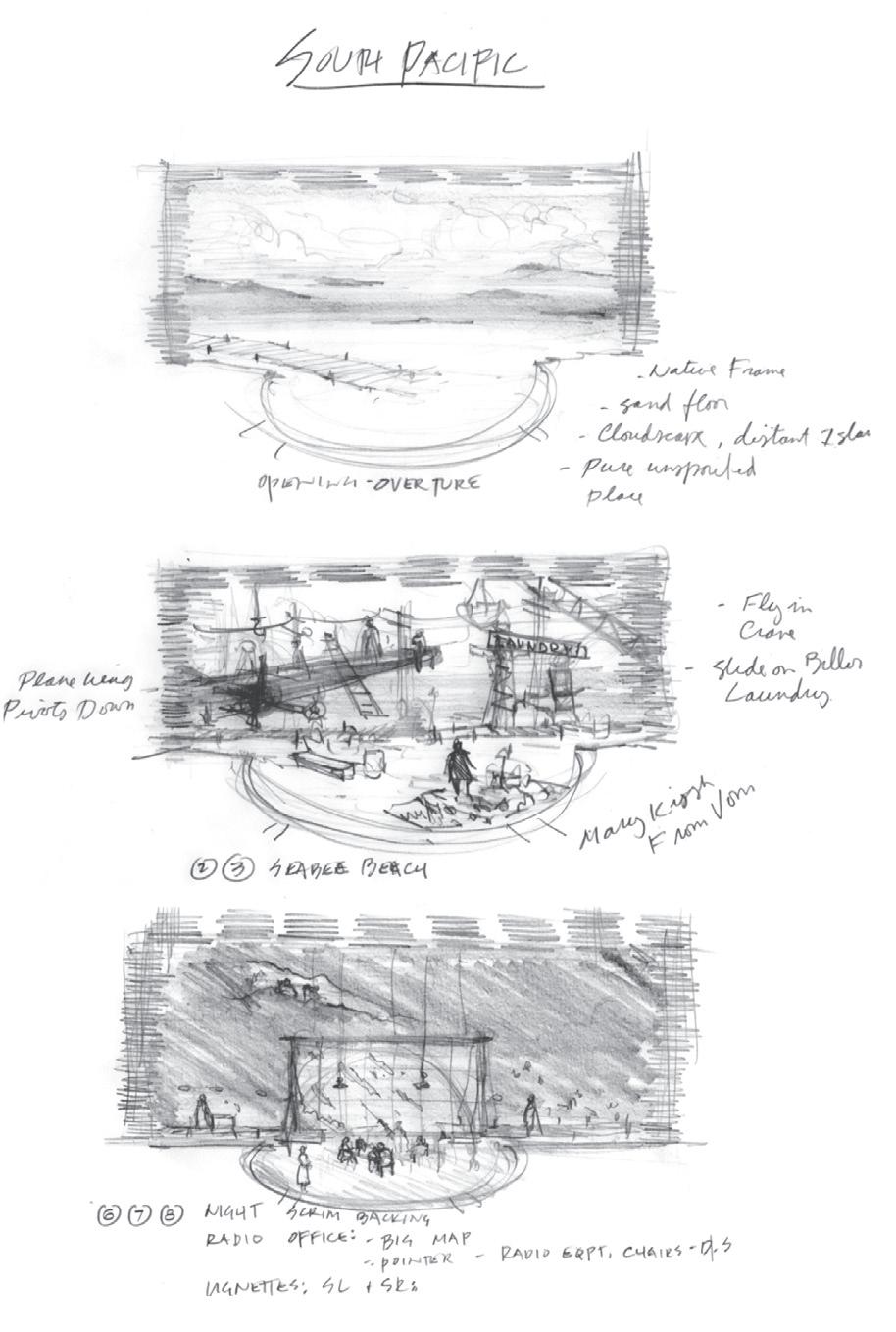
Another memory was when this unknown actor from Hawaii came in to audition for Bloody Mary. In she walked, and I thought, “mysterious . . . funny . . . fierce . . . sexy . . . foreboding . . . ,” kind of everything you could want. After she left the room, casting director Bernie Telsey came in and asked if we wanted to hire her. He got unanimous yeses from everyone. He then said, “She is about to get on a plane back to Hawaii. If you want to hire her, why don’t I bring her back in the room so you can tell her?” Back in came the glorious Loretta Ables Sayre, who burst into tears upon hearing the news. And at the sitzprobe, the first time the cast meets the orchestra, she burst into tears once again, but for a different reason. As she finished “Bali Ha’i,” she said, “This is the first time in my life I have ever sung with an orchestra.” There were so many more moments: the discovery of the unknown Paulo Szot, the stunningly painted stormy backdrop, the three Seabees doing a quick Andrews Sisters sashay...
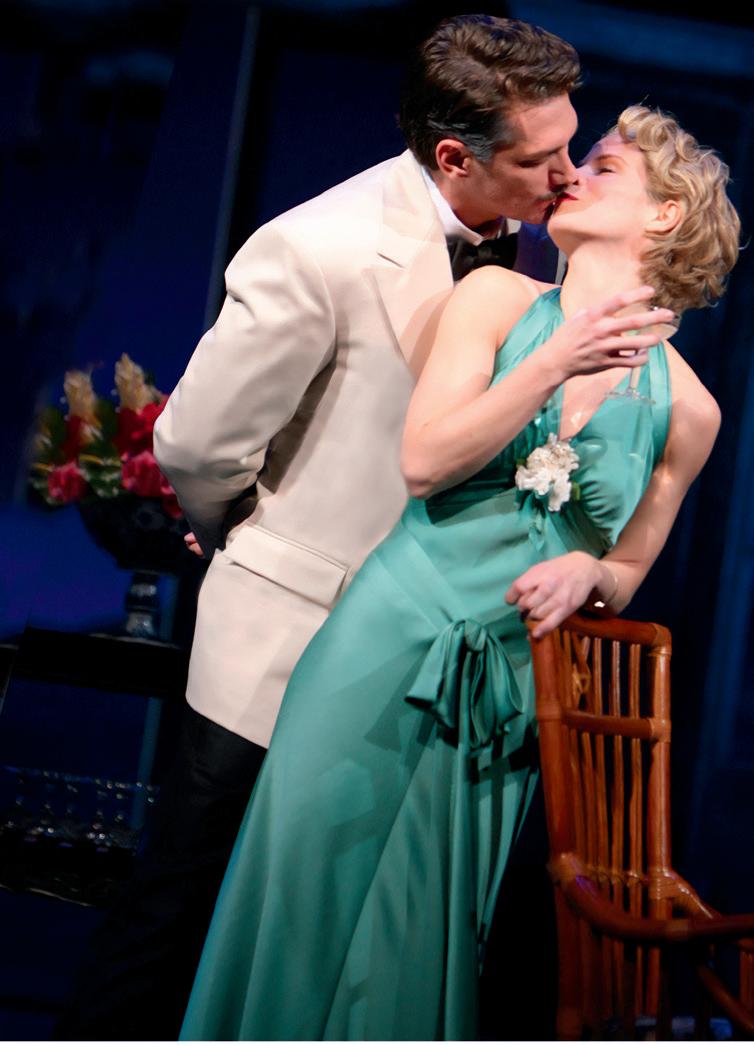
It always felt like home when one of our shows was in André’s hands. There were so many more glorious moments: Nick Hytner’s Carousel imported from the Royal National Theater providing an introduction to the amazing Audra McDonald, Kelli O’Hara’s Mrs. Anna in The King and I (has anyone else played both Anna and Nellie Forbush?), and finally winning a Tony Award.
My only regret: there isn’t a place in the Beaumont for people like me to hop induring a performance to catch favorite moments. No standing room, alas. A worthwhile price to pay, I guess. ▪
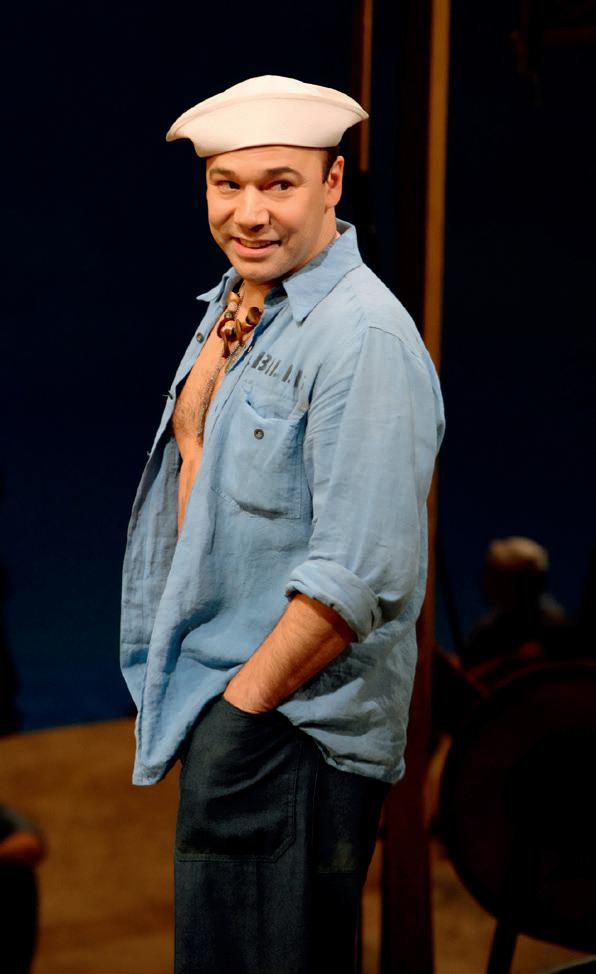
Scenes from South Pacific. All photographs copyright: Joan Marcus.
Header Photo: Kelli O'Hara, Danny Burstein and company.










